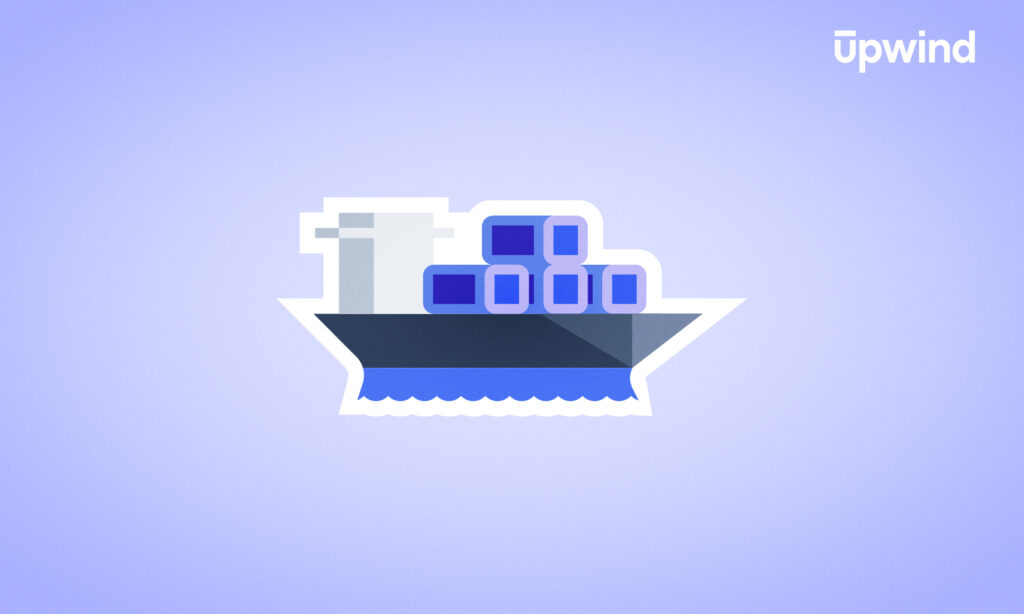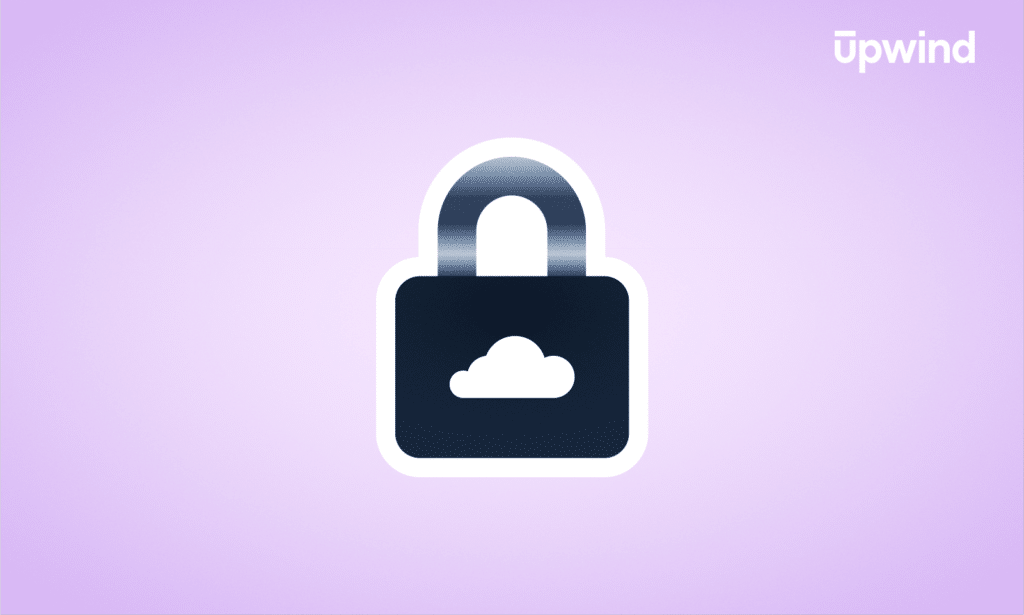
There are a variety of approaches to workload security, ranging from zero-trust to network segmentation, agents or agentless – and more. Cloud workloads need securing, but the details of how to achieve a secure environment best, without standing in the way of agile development, make the roadmap to workload security less than direct. We’re breaking down the debates, benefits, and challenges of securing workloads in today’s cloud.
What is Cloud Workload Security?
Cloud workload security (CWS) is all about protecting applications, services, and data running in cloud environments. A workload might encompass everything from virtual machines (VMs) to containers, serverless functions, and APIs that transmit data in the cloud.
Cloud workload security includes:
- Workload Visibility: Continuous monitoring of workloads to identify and manage assets, configurations, and threats.
- Vulnerability Management: Scanning and patching workloads to fix known vulnerabilities in applications and operating systems.
- Runtime Protection: Detecting and mitigating threats while workloads are running, including blocking malicious processes or behaviors.
- Configuration Management: Helping workloads follow security best practices by checking configurations against policies and frameworks.
- Identity and Access Control: Managing workload identities and enforcing least-privilege access to prevent unauthorized actions.
- Threat Detection and Response: Using threat intelligence, anomaly detection, and behavioral analysis to identify and respond to incidents.
- Compliance and Reporting: Ensuring workloads comply with security frameworks like SOC 2, HIPAA, or GDPR through continuous auditing and reporting.
Cloud workload security exists across the lifecycle, from pre-deployment security to secure workloads before they are deployed, as with infrastructure as code (IaC) or image scanning, as well as during runtime, with active threat protection, workload isolation, and automated remediation.
Because cloud ecosystems are dynamic, ephemeral, and with shared responsibility, safeguarding them comes with its own challenges.
Runtime and Container Scanning with Upwind
Upwind offers runtime-powered container scanning features so you get real-time threat detection, contextualized analysis, remediation, and root cause analysis that’s 10X faster than traditional methods.
Core Challenges of Cloud Workload Security
Cloud computing is a mainstay of modern development. It’s scalable, agile, and reliable, allowing for the launch of applications and services in minutes, reducing time to market, and freeing organizations from maintaining their own infrastructures.
Spending on public cloud services is set to double between 2024 and 2028, reaching over $16 billion per year.
However, as cloud adoption accelerates, securing workloads across diverse environments becomes increasingly complex. With increasingly distributed resources, teams inevitably find it more challenging to protect sensitive data and maintain operational resilience. From managing visibility across multi-cloud deployments to overcoming security silos and compliance hurdles, addressing these obstacles is key to protecting workloads.
Here’s a closer look at the four key challenges shaping cloud workload security today.
Visibility Across Multi-Cloud
Workloads often span multiple cloud providers (e.g., AWS, Azure, Google Cloud), each with different logging, monitoring, and alerting mechanisms. This fragmentation can create blind spots in cloud environments. But lack of visibility can delay threat detection, leading to data breaches or service outages.
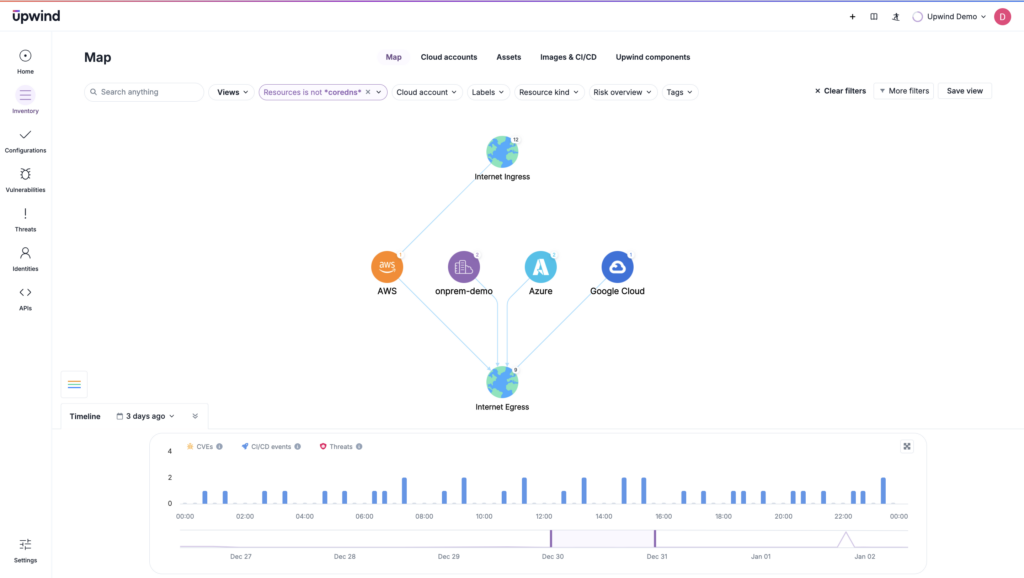
Misconfigurations
Configuration errors such as open storage buckets, unrestricted access permissions, or exposed databases are common. Misconfigurations are a leading cause of cloud data breaches and can expose sensitive data, disrupt services, or allow unauthorized access.
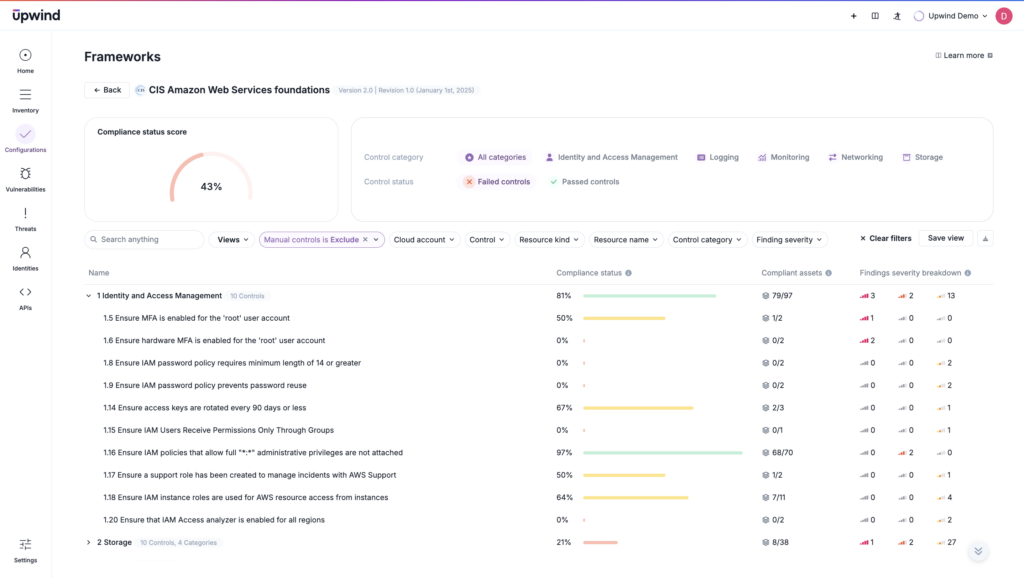
Security Silos
Cloud-native services often use siloed security controls, making holistic protection difficult. Security teams may struggle to consolidate alerts from multiple monitoring tools, creating a fragmented view. Siloed security leads to alert fatigue, delayed incident response, and gaps in coverage.
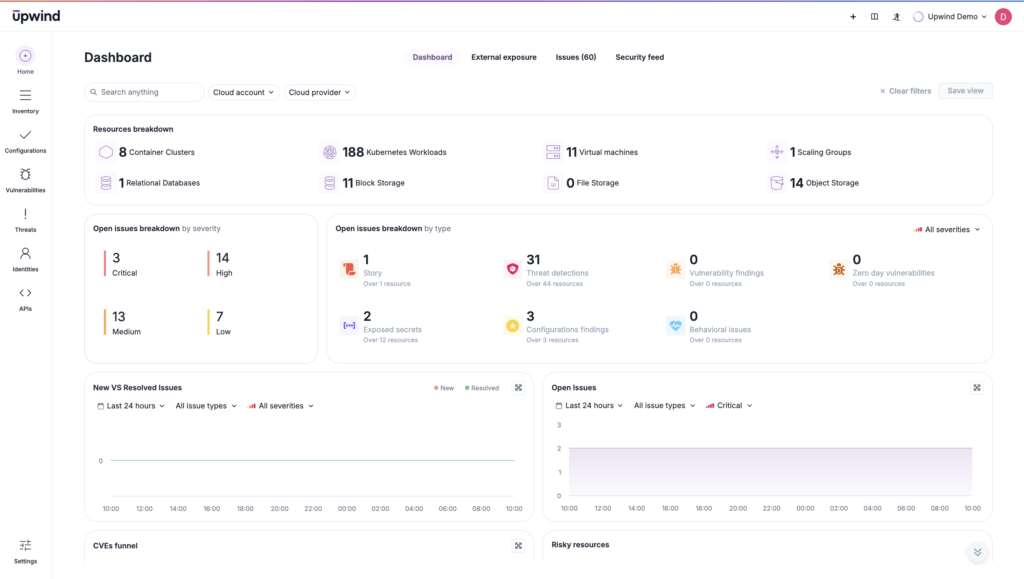
Compliance Complexity
Compliance requirements differ across industries (e.g., HIPAA, GDPR, SOC 2) and geographic regions. Cloud workloads must meet multiple frameworks simultaneously, too. It all complicates compliance management, but failure to maintain compliance can result in legal fines, reputation damage, and loss of customer trust.

Key Debates in an Emerging Hybrid Strategy
Addressing these core challenges is just the beginning.
As cloud environments scale and security practices mature, deeper debates emerge about the best ways to secure workloads without hindering agility or driving up operational complexity.
From choosing between Zero Trust and network segmentation to debating agent-based versus agentless monitoring, cloud security decisions come with trade-offs. Let’s look at these debates focusing on how to center workload security strategy on desired technical outcomes.
| Key Choice | Debate | Common Tech Goal | Trade-Offs | Alternatives |
| Zero Trust vs. Network Segmentation | Should cloud security rely on Zero Trust principles, traditional network segmentation, or both? | Continuous, adaptive access control | Zero Trust enhances granularity but increases complexity; segmentation adds barriers. | Micro-Segmentation: Isolates workloads within clouds at the app level for added control. |
| Agent-Based vs. Agentless Monitoring | Is deeper, real-time insight worth the overhead of deploying agents? | Comprehensive threat detection | Agents provide detailed monitoring but increase resource use; agentless tools are lightweight but lack depth. | Agentless Sensors: Limit resource use without giving up granularity. |
| Cloud-Native Tools vs. Third-Party Tools | Are cloud-native security tools enough, or are third-party platforms essential? | Unified cloud security management | Native tools integrate well but come with limited features and cover just one cloud service; third-party tools offer multiple features but require integration. | Combination approach: Use cloud-native tools for baseline protection and compliance, with third-party tools for advanced monitoring, threat detection, and multi-cloud coverage. |
| Inline Inspection vs. Traffic Mirroring | Should traffic be inspected inline or mirrored for analysis? | Real-time threat detection | Inline inspection blocks threats instantly but can slow traffic; mirroring enables passive analysis but delays responses. | Service Mesh Security: Handles traffic security with built-in inspection for containerized apps. |
| Automated vs. Manual Response | How much incident response should be automated versus left to human operators? | Faster, more efficient incident response | Automation speeds response but can cause errors; manual responses ensure accuracy but slow down resolution. | Human-in-the-Loop Automation: Automates tasks while requiring human sign-off for high-risk actions. |
| Centralized vs. Decentralized Policy Management | Should policies be centrally managed or tailored per environment? | Consistent security policy enforcement | Centralized policies reduce drift but may not fit all workloads; decentralized policies offer flexibility but increase complexity. | Policy-as-Code: Automates and standardizes policies through CI/CD pipelines. |
| Encryption Everywhere vs. Selective Encryption | Should all data be encrypted or only sensitive data? | Maximum data protection with performance | Encrypting everything ensures security but affects performance; selective encryption reduces costs but creates blind spots. | Confidential Computing: Encrypts data during processing using secure enclaves. |
Overall, the debates and the alternative tools and strategies aren’t competitors, per se. They’re layers of protection that serve certain workloads well but come with trade-offs. Emerging strategies capitalize on a hybrid model to avoid downsides as much as possible, or rely on new technologies, like the extended Berkeley Packet Filter (eBPF), to sidestep conventional options and debates altogether.
Let’s break these workload security approaches and debates down a little further.
Zero Trust Vs. Network Segmentation
Zero Trust is a security model that never trusts by default and always verifies. It applies security policies independently of the network, meaning every user, device, and workload must prove their identity before accessing anything, while network segmentation involves dividing a network into smaller segments (zones) based on trust levels, reducing the attack surface.
These two models aren’t competitors, and organizations need not choose one over the other. Once, legacy environments relied heavily on network segmentation, and for those with existing capabilities and legacy infrastructure, the approach may continue to meet their security goals.
Ultimately, Zero Trust models fit cloud-native environments, as runtime security ensures every workload is monitored in real time, so only legitimate traffic or processes run, for overall consistency with Zero Trust principles.
Modern CNAPPs can also use both models, and even employ microsegmentation to isolate workloads, containers, or serverless functions.
Agent-Based vs. Agentless Monitoring
Agent-based monitoring uses software installed in the user space to provide real-time visibility into workloads. However, agent-based monitoring often comes with operational overhead, including deployment complexity and resource consumption. In contrast, agentless monitoring uses cloud service APIs to scan workloads without installing anything. That approach means broad coverage and less granular data.
There’s an alternative: lightweight sensors like eBPF can run in the kernel without altering it, freeing resources without giving up granularity. Adding agentless monitoring can add to workload security by offering monitoring of cloud configurations and permissions.
Cloud-Native Tools vs. Third-Party Tools
Cloud-native tools are built into cloud platforms like AWS, Azure, or Google Cloud to offer services such as identity management, threat detection, and logging. These native solutions are easy to deploy and ideal for organizations using a single cloud provider, but that’s not common. Their visibility across multi-cloud environments and their features are limited. For instance, teams may not get process-level monitoring or deep runtime security with behavioral analysis tuned to their stack.
Third-party tools provide broader coverage, deeper security features, and cross-cloud compatibility, often including hybrid environments. Third-party tools will need integration to work seamlessly across clouds, but deliver a broad view of resources without switching between dashboards, with advanced features like threat detection, vulnerability management, and compliance reporting.
Automated vs. Manual Response
Automated response uses predefined rules and machine learning to react instantly to security threats. It’s ideal for high-speed environments where human intervention would be too slow, such as blocking a compromised container or quarantining an infected workload. On the other hand, manual response offers complete control and context-aware decision-making, making it an ideal choice for complex or high-impact incidents.
There’s not much debate here: teams need both. The true controversy lies how much of each approach to apply and when. After all, all teams must balance speed and resources.
Modern CNAPPs can help by using machine learning to prioritize fixes so human teams don’t waste time on unimportant threats.
Centralized vs. Decentralized Policy Management
For teams that need to meet strict governance standards, centralized policy management is ideal. It lets them enforce security rules from a single control point for consistency across clouds, regardless of differences in the default policies of different environments. That means workloads will always run consistently, no matter where they’re deployed. The approach simplifies compliance and reduces configuration drift but can create bottlenecks if the policy engine struggles to keep up with large-scale deployments.
Decentralized policy management allows individual teams or cloud environments to set their own security policies. Have to meet data sovereignty and compliance dictates for some workloads? They can have stricter policies. Staging in a development environment? Teams can allow more liberal permissions to make their work easier.
Modern CNAPPs combine both methods using policy-as-code that lets teams set policies and survey their entire ecosystem with centralized policies, while allowing for exceptions.
Encryption Everywhere vs. Selective Encryption
Encryption Everywhere secures all data — whether in transit, at rest, or even in use — across the entire cloud environment.
Encrypting all data running in workloads might seem ideal for cloud workload security. After all, this approach minimizes data exposure and helps meet strict compliance requirements. But encrypting everything can impact performance, especially for workloads requiring real-time data processing.
Selective Encryption focuses on securing only sensitive data, such as personally identifiable information (PII) or financial records. It’s an approach that works so long as all data is classified properly and no sensitive data escapes scrutiny.
Use tools like a CNAPP that enforces encryption at the service level relating to workload security, forcing the use of protocols like TSL for API traffic or secure pod-to-pod communication in Kubernetes.
Even as these debates continue to inform discussions about cloud workload security, they don’t represent either/or choices. Instead, modern CNAPPs merge these models into integrated, multi-layered security platforms. This ensures comprehensive protection across cloud workloads without forcing rigid trade-offs.
Upwind Protects Cloud Workloads
As cloud environments expand, balancing Zero Trust principles, runtime protection, policy automation, and workload isolation all become non-negotiables for keeping the modern applications that run there secure.
Upwind delivers real-time protection, automated policy enforcement, and deep visibility into workloads across Kubernetes, containers, and multi-cloud environments. Its runtime security ensures threats are detected and blocked while workloads run, while it automates governance at scale. So whether you’re running thousands of microservices or securing critical infrastructure, Upwind ensures cloud workloads stay protected.
Schedule a demo to see how.
FAQ
What’s the difference between cloud workload protection and runtime protection?
Cloud Workload Protection (or security) implies protection across the lifecycle of workloads, from pre-deployment to runtime and post-deployment. It includes:
- Pre-deployment security: Scanning container images, VMs, and IaC templates for vulnerabilities
- Deployment security: Enforcing identity and access controls
- Post-deployment security: Continuous monitoring for misconfigurations, threats, and compliance issues
On the other hand, runtime protection is a small part of overall cloud workload protection. It focuses on behavior monitoring, threat detection and response, and process and network security for running workloads. Tasks handled under the umbrella of runtime security include identifying anomalies at runtime, identifying privilege escalations, spotting file modifications, blocking suspicious activity, isolating workloads, and inspecting system calls and API requests in real time.
What are the 2 types of workload?
There are 2 primary types of workloads in cloud computing:
- Stateless workloads: A stateless workload doesn’t retain data (or state) between transactions. It processes tasks independently and its actions are self-contained. Examples are API requests and serverless Lambda functions.
- Stateful workloads: Stateful workloads store and retain data between transactions, and their operations depend on past interactions. Examples are databases and customer portals.
Each type of workload requires its own security approach. Stateless workloads need runtime protection and API security, while stateful workloads need data encryption, persistent storage protection, and access control to safeguard their sensitive data.
What is cloud workload management?
Cloud workload security is part of cloud workload management, which involves deploying, monitoring, scaling, and securing workloads across cloud environments.
Cloud workload management goes beyond security, including resource allocation, performance optimization, cost management, and policy enforcement needed to run workloads.
Workload management tasks may include using orchestration tools like Kubernetes, automation frameworks, and monitoring platforms.



